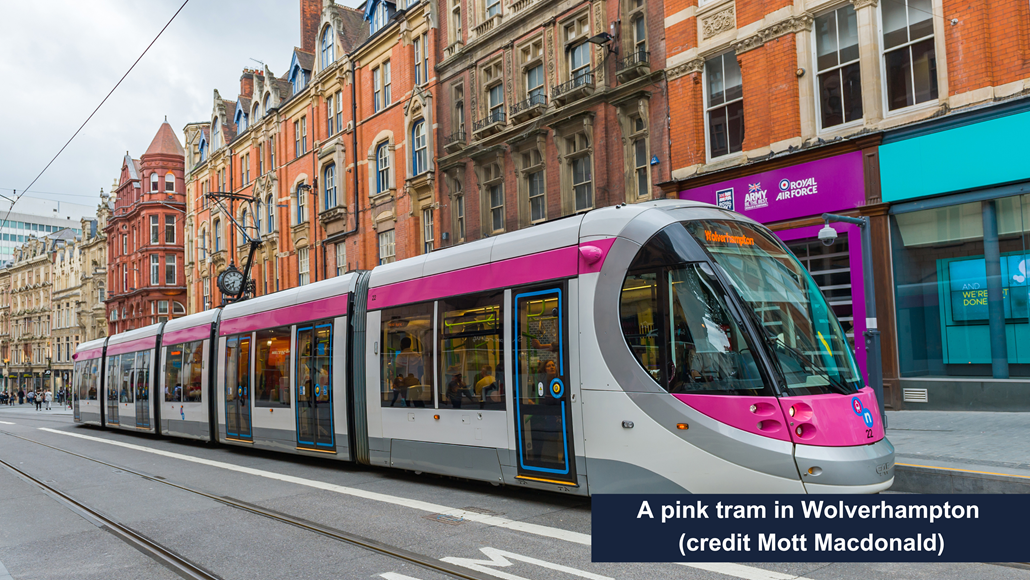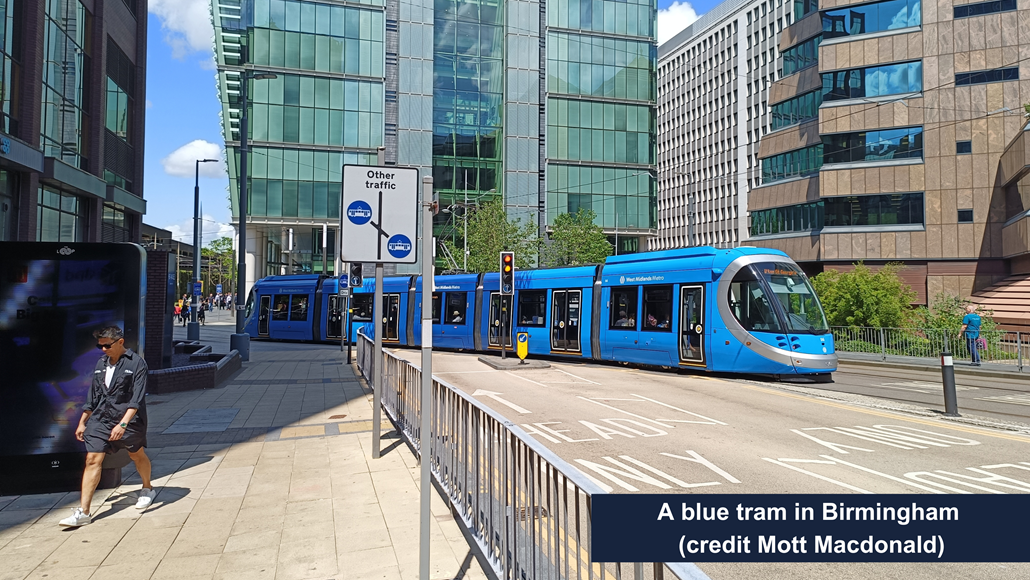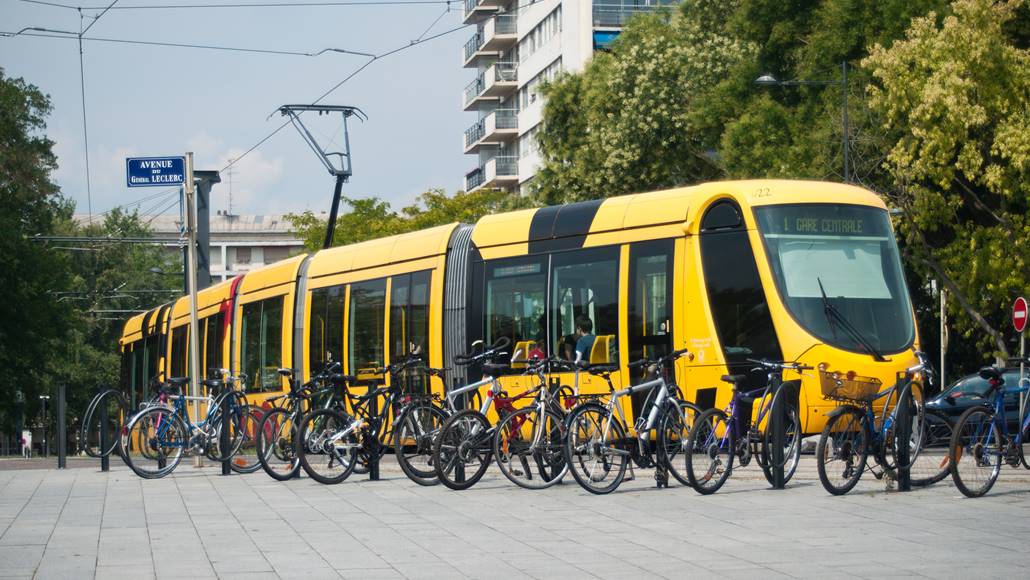
Mass Transit West Yorkshire
We want to create a new transport system for a greener, more inclusive and better connected West Yorkshire. Our vision for transport goes beyond getting people from A to B. It’s about getting all of us – our people, our communities, our businesses – to where we want to be as a region.
What is Mass Transit?
Mass Transit is a large-scale public transport system which usually connects cities and suburban areas. Typically, Mass Transit would use one or more modern high-capacity bus, tram or tram-train type vehicles.
Even with all the improvements that we have planned for our trains, buses, walking, cycling and driving infrastructure, we still won’t have completed the transport network West Yorkshire wants, needs and deserves. We see mass transit as essential to helping our communities thrive and our economy flourish, bringing people and places closer together.
We’re looking at the benefits and feasibility of a variety of mass transit options and we’ll be asking you to have your say too.
As part of an integrated transport network, Mass Transit can:
- Help to combat climate change through providing a real and sustainable alternative to the car, cutting emissions, and improving air quality;
- Connect the important places across our region – helping more people travel to jobs and education, to attend medical appointments, to visit friends and family and to visit attractions and attend events in a reliable, efficient, affordable way;
- Support productivity and inclusive growth – creating new transport capacity, addressing inequality by connecting communities, rebalancing the economy, and encouraging investment and regeneration in our region;
- Support health and wellbeing through creating healthy towns, cities, and local communities across our region;
- Strengthen West Yorkshire’s and the north of England’s economic recovery post pandemic, by prioritising jobs and skills.




A new transport system for West Yorkshire
We want to create a new way to travel around West Yorkshire. Our ambitious proposals will be inclusive and accessible to everyone and make our region a greener, fairer and healthier place to be.
We want to make our transport system much easier, both to use and to understand. So easy in fact that taking quick, joined-up journeys becomes second nature for us all.
A new Mass Transit system for West Yorkshire will be a key element, linking communities with a quick and reliable service and integrated with cycling, walking, bus and rail. This will represent a bold investment; a transformational transport system that will benefit many generations to come. Mass transit will be key to encouraging businesses to invest in the North, in turn creating new job opportunities for our residents.

The story so far
In 2022, the Mass Transit Vision 2040 was consulted on by the West Yorkshire Combined Authority, with plans set out under the Connectivity Infrastructure Plan.
In 2024, the Combined Authority will launch a consultation on mass transit. This consultation will focus on early proposed route options.

Your voice matters
There have been two consultations related to the Mass Transit Vision 2040. In 2021, a public engagement was held on the Connectivity Plan, which featured the Vision 2040, and asked for views on the proposed corridors.
This revised Vision was consulted on in October 2022 to January 2023. Statutory consultees and the public were able to comment and provide their views. The feedback received is now being used to further update the Mass Transit Vision 2040, and refine route options for the next consultation.
You can find out more about each consultation on the Your Voice page. You can also register to Your Voice to keep up to date.
FAQs
- What is Mass Transit?
-
Mass Transit is another term to describe a large-scale public transport system which usually connects cities and suburban areas. Typically, Mass Transit would use one or more modern high-capacity bus, tram or tram-train type vehicles.
In 2021, we set out our ambitions in our 2040 Mass Transit Vision document. In 2024, the West Yorkshire Combined Authority will consult on proposals to connect key areas of West Yorkshire by Mass Transit.
- Why do we need Mass Transit?
-
We see Mass Transit as essential to help our communities thrive and our economy flourish, bringing people and places closer together.
Even with all the improvements we have planned for our existing train, bus, walking, cycling and driving infrastructure, we still won’t have the transport network West Yorkshire wants, needs and deserves.
That’s why we’re exploring Mass Transit options to further enhance our public transport network and make it more accessible.
- Why is this happening?
-
Through devolution, the UK government has handed the West Yorkshire Combined Authority greater powers for transport policy, which has reinforced the development of a mass transit system as a key ambition for the region. As we seek to take advantage of these new powers, mass transit will be a fundamental part of our wider strategy to deliver an integrated transport network across West Yorkshire, linking with existing transport modes such as bus and rail and providing a transport system which connects all communities.
- How will Mass Transit be delivered?
-
Development of the whole network will be a long-term project which will be delivered in phases.
A phased approach has proven successful in other city regions which have delivered Mass Transit systems of a similar size and scale, like Manchester and Nottingham.
Delivering phases in a sequenced approach will help maintain our momentum and enable the network to grow over time to meet the travel demands of people in the region and deliver long lasting benefits.
- When will Mass Transit be built and when will we be able to travel on it?
-
The first phase is planned to begin construction in 2028 and begin operation by the early 2030s. Future phases are intended to follow. The timescales for these later phases are not yet known. However, the full network is projected to be completed by 2040.
- What needs to happen before construction begins?
-
Before building work can begin, there are a series of legal and consultation processes we need to complete.
We will be consulting with you firstly, about the options for initial routes in 2024, followed by a further consultation on the preferred route. The consultations will help inform the ongoing work we will be doing to prepare our submission under the Transport and Works Act Order (TWAO), the legal process that allows us to start construction
- Will there be any improvements to other forms of public transport in the short-term, while we wait for Mass Transit?
-
Preparing the Transport and Works Act Order to allow us to begin constructing Mass Transit could take a couple of years, which is why we have looked at “quick wins” to improve bus services in the short-term. We have been awarded £70 million of funding for our Bus Service Improvement Plan to reduce fares, introduce new ticket types and new routes as well as additional investment for infrastructure projects granted via the City Regional Sustainable Transport settlement (CRSTS).
- How are these proposals different from previous plans?
-
Our plans for mass transit take a regional approach to transport, focusing on West Yorkshire as a whole, rather than focusing solely on Leeds.
Above all, our approach is to ensure the wider region benefits from the much-needed improved connectivity mass transit can bring. We will also work hard to integrate mass transit with bus, rail, cycling and walking to deliver a world class transport system that West Yorkshire needs to prosper.
- Will the proposals reduce congestion on the roads?
-
West Yorkshire is presently one of the most car dependent parts of the UK.
The mass transit system will reduce congestion and help us to combat climate change. A new mass transit system for West Yorkshire will be a key element, linking communities that are not well served at present, with a quick and reliable service and integrated with cycling, walking, bus, and rail. It will be seamless and sustainable. We have seen from cities that already have a successful mass transit system, such as Manchester, benefit from reduced congestion. Indeed, Manchester now has fewer cars on the roads, a reduction of 38.8 million car-kms/year and reduced carbon emissions by 6700 tonnes per annum.
- How will Mass Transit benefit our local economy?
-
Mass transit will make it easier for people from our communities to access jobs across the region. This will attract new businesses and investment...
Investment means better jobs. Better jobs mean higher wages, and higher wages mean better standards of living for everyone.
- How will Mass Transit make travelling in West Yorkshire more accessible and inclusive?
-
As set out in our Mass Transit Vision 2040, we have a clear and ambitious aspiration for how we will approach accessibility and inclusion. We aspire for Mass Transit to be inclusive and accessible to all. The championing of equity, diversity, and inclusion is at the heart of its development and design.
Throughout the development, design, and operation of Mass Transit, we will continually be exploring ways to enhance accessibility and inclusion to meet and where possible exceed legal design standards, striving for West Yorkshire Mass Transit to be best in its class for accessibility.
- How will you make travel safer?
-
Ensuring the safety of all users will be at the heart of how mass transit is designed and operated. Mass Transit will support, and build on, a wide range of initiatives and campaigns already launched by the Mayor and Deputy Mayor for Policing and Crime to work towards a safe West Yorkshire.
Throughout the system’s development, design and operation, we will be continually looking to better understand the particular safety concerns and needs of a wide range of groups when travelling, such as women and girls.
- What consultation and engagement has happened so far?
-
Our Mass Transit proposals have been developed in response to feedback on our two Mass Transit Vision 2040 consultations. In 2021, a public engagement was held on the Connectivity Plan, which featured the Vision 2040, and asked for views on the proposed corridors.
A revised Vision was consulted on in October 2022 to January 2023. Statutory consultees and the public were able to comment and provide their views.
You can find out more about each consultation on the Your Voice page. You can also register to Your Voice to keep up to date with the results of consultation and engagement activities.
- When will you be consulting about Mass Transit?
-
In 2024 we will consult on potential route options for the first phase of mass transit. This will include an online survey on Your Voice, public information events and engagement with statutory consultees, stakeholders and communities.
- How will you ensure that the consultation is accessible?
-
Once the consultation period begins, alternative formats of the engagement materials will be available upon request, such as braille or large print. The materials will also be available to view in person at public events. Further details will be provided once the consultation has started. You can register to Your Voice to keep up to date.
- How will residents and businesses be kept informed of the progress of the scheme?
-
You can register to follow the project and have your say in any future consultations at https://www.yourvoice.westyorks-ca.gov.uk/register.
Updates on project progress will also be provided via the West Yorkshire Combined Authority and via press articles. We will publish a report on the consultation responses on this website.
Find out more about
-
Read more about Mayor sets out plan for West Yorkshire tram system to better-connect region
Mayor sets out plan for West Yorkshire tram system to better-connect region
Proposals for first phase of mass transit scheme set to be approved by West Yorkshire leaders before submission to the Government
-
Read more about Transport strategy
Transport strategy
Our ambition is to create a modern, world-class, well-connected transport system that makes travel around West Yorkshire easy and reliable.
-
Read more about Improving West Yorkshire's buses
Improving West Yorkshire's buses
Our vision is for buses to be the first choice for travel in West Yorkshire - not because you don’t have a car, but because buses are more affordable, convenient to use, and better for the environment.
-
Read more about Walking and cycling strategy
Walking and cycling strategy
We are working with regional partner councils to develop a series of Local Cycling and Walking Infrastructure Plans for West Yorkshire
